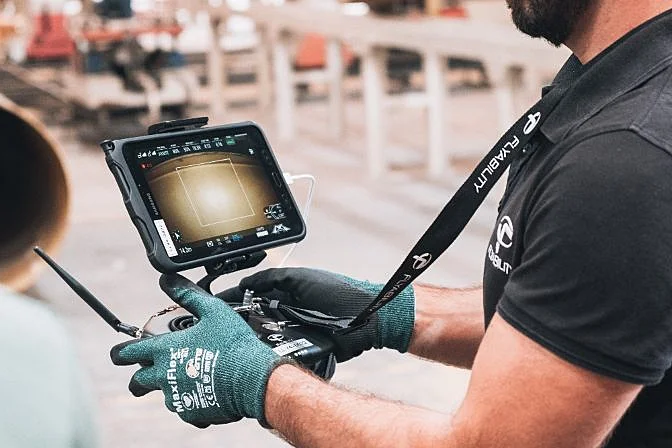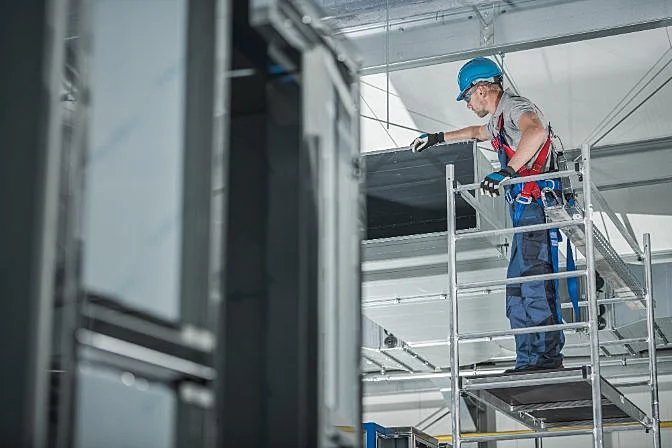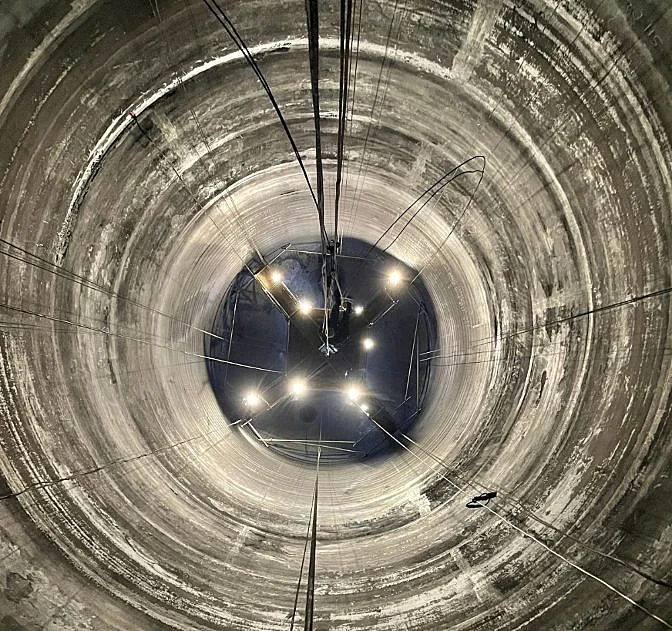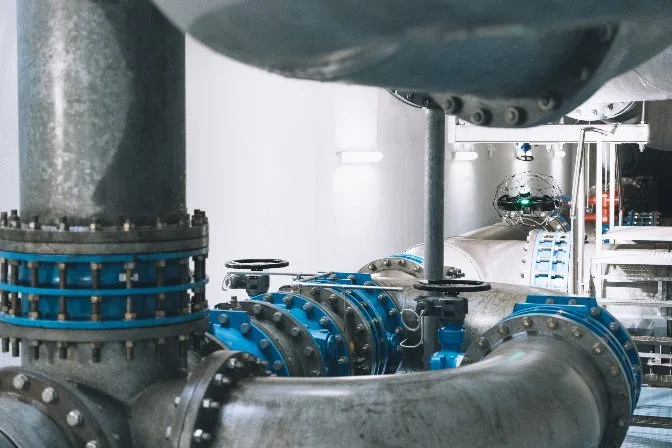An internal inspection is a process used to examine the inside of an asset or structure. It plays a crucial role in maintaining the safety and integrity of equipment, especially in industries where hidden flaws can lead to major failures. Internal inspections are often conducted alongside external inspections to ensure that every part of the asset is thoroughly examined. These inspections help identify any internal damage, corrosion, cracks, or other issues that might not be visible from the outside. Commonly referred to as interior or inner inspections, these assessments are vital for preventing potential hazards and ensuring that assets remain in good working condition. They are typically performed by trained inspectors using various tools and techniques. Traditionally, internal inspections required inspectors to physically enter confined spaces, such as tanks, boilers, or pipelines. However, with advancements in technology, remote solutions like drones and robotics have become popular alternatives. These tools allow inspectors to stay safe while still collecting high-quality visual data from inside the asset. By using non-destructive testing (NDT) methods, inspectors can gather detailed information without causing damage to the asset. This helps in making informed decisions about maintenance, repairs, or further evaluations. Whether it's through scaffolding, rope access, or remote visual inspection (RVI) tools, each method has its own advantages and is chosen based on the specific needs of the inspection. Discover more about NDT and how it’s applied in different scenarios in our comprehensive guide. There are several methods used to conduct interior inspections, depending on the environment and the type of asset being inspected. The most common approaches include: All three methods aim to provide inspectors with the necessary data to assess the condition of an asset. While scaffolding and rope access involve direct human involvement, RVI tools offer a safer and more efficient alternative, especially in hard-to-reach or hazardous areas. With scaffolding, inspectors build temporary structures to reach the interior of large assets. While effective, this method is time-consuming and costly, leading many companies to explore other options. Rope access is another traditional technique used for inspecting high places or confined spaces. Certified technicians use ropes and safety equipment to move around the interior of the asset, allowing them to closely examine surfaces and detect defects. On the other hand, RVI tools, such as drones and robotic systems, have revolutionized the industry. They enable inspectors to collect data remotely, reducing risk and saving time and resources. Explore more about these methods and their applications in our detailed guides. Scaffolding is a temporary structure built to support workers during internal inspections. It allows inspectors to access areas that would otherwise be difficult to reach. However, setting up and dismantling scaffolding can be expensive and time-consuming, which often leads to extended downtime for the asset. Despite its limitations, scaffolding has been widely used in the past due to its reliability. However, with the rise of more advanced technologies, many organizations are shifting toward more cost-effective and safer alternatives. Learn more about scaffolding and its various uses in our in-depth guide. Internal rope access is a method used to inspect high or confined spaces. It involves trained professionals who use ropes and specialized safety gear to move through the interior of an asset. This approach is particularly useful for inspecting large industrial structures like pressure vessels, boilers, and stacks. Rope access offers greater flexibility compared to scaffolding, as it doesn’t require extensive setup. It also allows inspectors to perform light maintenance tasks while on-site. However, it requires highly skilled and certified personnel to ensure safety and accuracy. Discover more about rope access and its importance in modern inspection practices. Remote visual inspection (RVI) tools, such as drones and robotic systems, are becoming increasingly popular for internal inspections. These tools allow inspectors to collect data without entering dangerous or confined spaces, significantly improving safety and efficiency. Drones like Flyability’s Elios 3 can navigate tight spaces and capture high-resolution images, making it easier to spot defects. By eliminating the need for scaffolding and reducing human exposure to hazardous environments, RVI tools save time and reduce costs. Explore the latest inspection tools and how they’re transforming the industry. During internal inspections, inspectors rely on non-destructive testing (NDT) methods to answer three key questions: The first step in an internal inspection is to determine whether any defects exist within the asset. This includes checking for cracks, corrosion, wear, or structural weaknesses. Once identified, these issues are documented for future reference and maintenance planning. Locating defects is essential, but it can be challenging, especially when using remote inspection tools. In environments like mines or sewers, GPS signals may not work, making it harder to pinpoint exact locations. Inspectors often use barometric data, blueprints, or video references to map out defect locations accurately. Advanced software, such as Flyability’s Inspector 3.0, now provides inspectors with 3D point clouds that show exactly where defects are located. This makes it easier to share findings with engineers, maintenance teams, and site managers. Knowing the size of a defect is crucial for determining the next steps in maintenance or repair. It helps decide whether the issue requires immediate attention, ongoing monitoring, or a full repair. Accurate measurements ensure that the right actions are taken to maintain the integrity and safety of the asset. Internal inspections are essential across a wide range of industries, as even small defects can lead to major failures if left unchecked. Here are some of the key sectors that rely on internal inspections: Common assets that require internal inspections include: Regular internal inspections help prevent accidents, reduce downtime, and ensure compliance with safety standards. As technology continues to evolve, the methods used for internal inspections will continue to improve, making the process faster, safer, and more accurate.
Custom Stainless Steel Stamping Bending Sheet Metal Parts,Professional Metal Stamping Fabrication ,Laser Cutting Sheet Metal Stamped Parts Fabricator,Stamping Custom Cnc Machining Services.
Our company has always had strict quality control standards in the market of refrigeration and heat exchange equipment, focusing on providing customised services to our customers. Not only do we have high requirements for the selection of raw materials, but we also keep up to date with the latest production processes and have high testing standards.
Stamped Parts,Customized Sheet Metal,Cut Stainless Steel Sheet,Electroplated Sheet Metal Parts Xinxiang Yukun Refrigeration Technology Co.Ltd , https://www.yukunevaporator.comWhat Is an Internal Inspection?

Ways To Conduct An Interior Inspection
Scaffolding

Internal Rope Access

Remote Visual Inspection Tools
 The Elios 3 performing an inspection at a water department
The Elios 3 performing an inspection at a water departmentThree Questions Inspectors Must Answer When Conducting Internal Inspections
1. Are there any defects in the asset?
2. Where are the defects located?
3. What are the dimensions of the defects?
Industries & Assets That Require Internal Inspections
Our company mainly produces products for:Fin Evaporator.Fin Type Condenser.Capillary Tube. Coolant Reservoir.Plate Reinforcement Parts.Stamped Parts. Aluminum Tube .Instrument Testing Equipment.
If you have any interest, please feel free to contact us. We can provide customized service according to your drawings or samples.